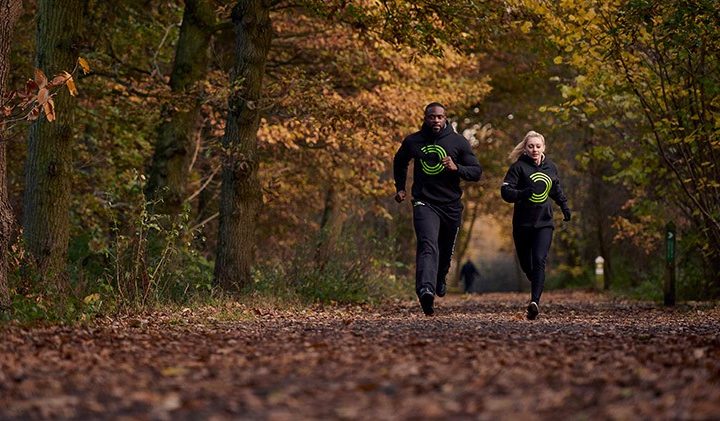TAKING ON A ‘TOUGH MUDDER’
Tough Mudder and other obstacle course races (OCR’s) are becoming increasingly popular activities for all manner of people to take part in. Many people take part in events like Tough Mudder to raise money for charity, as part of team building for their business or sports clubs or just as a bit of a training goal to keep them motivated.
However, there are also a unique band of people who take part in OCR’s competitively, and at the top level there are seriously competitive athletes competing in events like the ‘World’s Toughest Mudder’ which is not for the faint hearted and requires some serious training and mental toughness to complete. often by invite only.
Whatever level of fitness you are at, or however, seriously you are taking your Tough Mudder there are a few simple nutrition tips and tricks that can make your training and completing your Tough Mudder that little bit easier.
WHAT DOES A TOUGH MUDDER ENTAIL?
It is important to analyse the physical demands that the body is likely to be under during these kind of events in order allow you to the nutrition and training requirements to complete a Tough Mudder and hopefully still in one fully functioning piece … basically, as the adage goes; fail to prepare, prepare to fail!
The more ‘fun’ Tough Mudder events come in ‘half’ and ‘full’ distances. Half distance is around 5 miles in distance and the full distance in 10 miles… just a few miles short of a half marathon!
As if being able to run that kind of distance wasn’t enough of a challenge there are also several challenging obstacles thrown in the mix. These can range from crawling under barbed wire, wading through freezing cold water, climbing over high walls, running up (very) slippery slopes, rope swings, climbs and monkey bars!
This means that although you want to have a good endurance base to complete the event, you are also going to want to make sure you have the strength to haul yourself around the course!
HOW TO PREPARE FOR A TOUGH MUDDER
Training for a Tough Mudder is fairly straight forward and many details can be found on their own website. But following any incremental running program, working up slowly towards the required distance, combined with some resistance training and bodyweight exercises should have your bases covered from a training perspective.
8 WEEK ‘FULL’ TOUGH MUDDER TRAINING PROGRAM (1/2 THE DISTANCES RUN FOR ‘HALF’ VERSION).
| Week | Mon | Tue | Wed | Thu | Fri | Sat | Sun |
| 1 | 2km run | Full Body Strength | Rest | 3km run | Full Body Strength | Rest | Rest |
| 2 | 4km run | Full Body Strength | Rest | 5km run | Full Body Strength | Rest | Rest |
| 3 | 6km run | Upper Body Strength | Rest | 45 minutes circuit training | Lower Body Strength | Rest | Rest |
| 4 | 8km run | Upper Body Strength | Rest | 45 minutes circuit training | Lower Body Strength | Core Strength | Rest |
| 5 | 10km run | Upper Body Strength | Rest | 45 minutes circuit training | Lower Body Strength | Core Strength | Rest |
| 6 | 12km run | Upper Body Strength | Rest | 45 minutes circuit training | Lower Body Strength | Core Strength | Rest |
| 7 | 14km run | Upper Body Strength | Rest | 45 minutes circuit training | Lower Body Strength | Core Strength | Rest |
| 8 | 10km run | Rest | Rest | Rest | Rest | Race!! |
Is there anything else you can do from a nutrition perspective to help you train and perform better on the big day?
One of the temptations when taking part in long events is to focus on fancy sports drinks to fuel your training, and these can help in SOME situations, but the first and ‘simplest’ way to improve performance in terms of both endurance and lugging yourself over obstacles from a nutrition perspective is to lose some body fat (if you need to!).
This doesn’t have to be dieting to low levels of fat mass but think about it this way… having extra padding of fat tissue is effectively carrying a fat back pack, losing a few lbs of bodyweight can make a huge improvement in performance even without actual changes in performance caused by as a response to training.
Therefore, if you are carrying a little extra unwanted weight, instead of refuelling with lots of extra calories from sports drinks or just scoffing down whatever food is insight to help you recover, use the extra energy expended during training to help lower your body fat levels with a calorie-controlled diet.
If you already have moderate body fat levels then you can consider supplements to help with training, to fuel your workouts. One of the most important fuels for this kind of activity is carbohydrates. For training sessions of less than an hour you can often get enough carbohydrates in the diet from food sources (starches and sugars) to support training, however for longer runs or training sessions then consuming extra carbohydrates (around 60g per hour) should be enough to help support performance… but bearing in mind that on the day of the event refuelling might be challenging!
Regardless of which category you fall into there are some supplements that will be of definite benefit. Firstly, caffeine taken in amounts of 4-6mg per kg (300-420mg for a 70kg person) has been shown to improve performance… however those who are caffeine ‘naïve’ should start at doses much lower at 7-100mg to assess tolerance. Other beneficial supplements include beta-alanine and creatine, which will help with those high intensity bursts of activity such as sprinting and resistance training.
Using a protein supplement post-training will help with recovery and omega-3/fish oils have also shown some promise in reducing delayed onset muscle soreness (DOMS) and keeping joints healthy.
WHAT TO WEAR FOR A TOUGH MUDDER
Due to having to ‘launch’ yourself over obstacles and trudge through water you are going to want to dress in clothes that are quick drying. Even though the temptation might be to wear thick, warm clothing, the fact that you will be getting wet (possibly in the midst of winter) means that the less water your clothes hold and the quicker they dry the better. This means that light weight and breathable clothing are important, this means specialist running clothing is a good choice.
You also need to consider protect the skin against lumps, bumps and scratches so it is probably a good idea to wear long sleeved tops and leggings if possible. But you do also have to consider the temperature and on very hot days there will always be a trade off with keeping cool as clothes will still dry very quickly in these conditions so make sure they are as ‘cooling’ as possible.
It is also probably a better choice to wear swimming trunks or bikini bottoms under you clothes than normal underwear, these will be comfier and dry quicker!
The most important aspects is arguably foot wear, they should be lightweight, allow water to drain easily, and provide ankle support as well as some shock absorption in the sole for landing after obstacles and running on potentially uneven, firm surfaces. Most training shoes with breathable fabric and a sturdy but cushioned sole fit the bill perfectly, but for those wanting a specialist shoe then ‘all terrain’ trainers are considered the weapon of choice.
EATING FOR THE BIG DAY!
The best idea for any kind of endurance event is to make sure you eat plenty of fuel the day before, then have a light breakfast on the day of the event… running around and hurling yourself over obstacles with a full stomach is probably not the wisest idea!
Focus on having a few meals rich in carbohydrate that are fairly easy to digest, foods like pasta, rice and potatoes are OK but also don’t be afraid to throw in some sugars, such as fruit to make sure your carbohydrate stores (glycogen) are fully topped up.
The amount of carbohydrate you need will vary depending on how much muscle you carry and how low your energy stores from training to begin with, but as a general rule aiming for around 8-10g of carbohydrate for every kg of bodyweight should be enough to make sure your fuel tank is adequately full. For example, if you weigh 70kg then consuming around 500-700g of carbs will make sure you’re good to go.
If you’re consuming this much before the event you should be good to perform for a good couple of hours, obviously for the longer events it might be ideal to be able to refuel a bit during the event by taking on some extra fast digesting carbohydrates… if you can consume it easily through all the mud!

